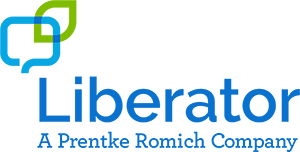Masking
Masking is the process of hiding certain words or symbols on a device-screen or on a manual communication board. It is a temporary measure aimed at supporting natural language development. Masking a display makes it easier to focus on selection patterns of symbols required to generate certain words or parts of speech. So, using masking, especially during an AAC intervention to introduce new vocabulary, or more complex sentence structures, helps AAC users to lock onto just the symbols they actually need. This in turn can encourage success & maintain motivation. The overall objective is to build upon established motor patterns & complement them with others. The idea is to avoid compromising on the number of locations on offer as this would be regressive & restrict vocabulary & linguistic constructs. If a device user is struggling to cope with a robust array of symbols, then masking can provide an invaluable assist, allowing the learner to practise & gain confidence, before moving back to the full array, with all its visual distraction.
Some reasons why you would use masking include:
- Reduces the distraction of peripheral words on the device
- Helps develop the motor pattern for that word or sequence
- Requires less cognitive effort to use the system
- Makes it easier to teach new words
- Helps reduce feelings of inadequacy that can overwhelm the AAC learner
Although we have the ability to mask vocabulary we must be mindful of the consequences of doing so. As we remove access to words we may:
- Over-mask, removing words they know, or could use, to express themselves
- Be tempted to presume a certain level of competence
- Forget to unmask or not know how fast to unmask additional words as therapy progresses
Our ultimate goal is for the device user to have access to all the words contained in the system, & to use the system quickly & efficiently. Wherever possible, we want to try & make progress without recourse to masking. At any rate we should seek to minimise the number of words that are actually masked.
One approach to consider is not to mask any words at the beginning of an intervention & only do so when there is evidence that masking will improve the user’s performance, as they deepen their understanding of the system.
Manual systems can, of course, be masked with card overlays easily enough, but this can still lead to another problem. If the AAC user is not interested or keen to pursue the topics & lesson plan prepared in advance of the therapy session, then much effort will be wasted. With dynamic display systems, there are sophisticated on-board tools, like Vocabulary Builder, that permit speech pathologists & teachers to “follow the child’s lead”. The masking process can thus be particular & dynamic, ensuring that the AAC learner remains engaged & enthusiastic by exposing just the right words, at just the right time.



